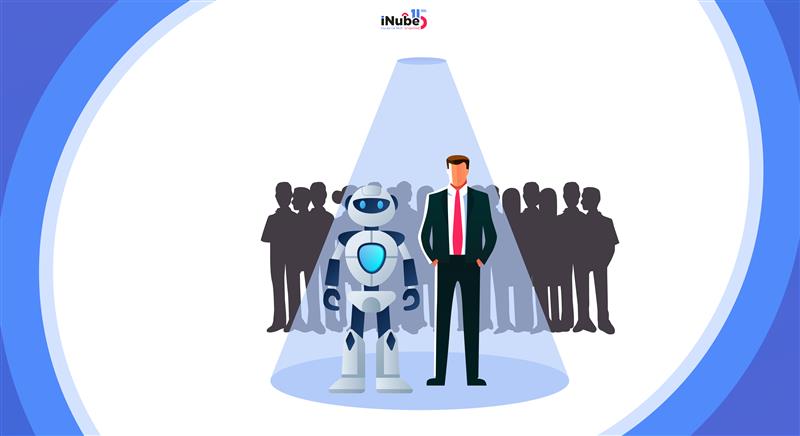The question that has been answered globally in the industry is- Whether AI will replace humans? Now, the new perspective that has come under the spotlight is whether AI will be helpful in creating advantages- well, this answer is pretty clear, isn’t it. Insurers that are using AI strategically are pulling away from their competitors at an unprecedented pace which essentially creates market positions that seem almost unfair.
However, here’s what the industry leaders will be essentially missing out upon- AI competitive advantage is not just about owning the fanciest technology, it is rather about using AI for fundamentally changing how you can compete. Read on to know more.
Industry Specific AI Competitive Advantage Framework
Here’s how industry specific AI competitive advantage framework works:
Superior Risk Intelligence
The AI-powered insurers can seamlessly assess risk with unprecedented accuracy by effortlessly analyzing thousands of data points which human underwriters cannot process effectively.
Dynamic Pricing Precision
With AI there is a real-time pricing adjustment which will be based upon individual risk profiles, market conditions and competitive positioning.
Predictive Customer Experience
The AI competitive advantage will be essentially including anticipating customer needs and also providing proactive solutions before the customers could realize that they need them.
Automated Operational Excellence
AI is helpful in transforming insurance operations by seamlessly automating the complex processes which are traditionally needed for extensive human intervention.
How AI Creates Sustainable Competitive Advantages in Insurance?
The AI competitive Advantage in insurance significantly builds momentum over time through different unique characteristics which are as follows:
Risk Assessment Refinement
The AI underwriting systems which have processed more applications become better at identifying profitable risks as well as avoiding the unprofitable ones. This leads to an improved loss ratio which the competitors essentially struggle to match
Claims Data Learning Loops
Every claim which will be processed by the AI systems which improves fraud detection, settlement accuracy and also processes speed. The insurers with more claims data will be training better AI models, which allows creating advantages that compound over time.
Customer Behavior Prediction
The AI systems will be helpful in analyzing the customer interactions with accurate prediction retention, cross-sell opportunities and the service needs, that enable more effective customer management strategies.
A Collaborative Approach- Human and Technology
While the above advantages clearly highlight the benefits of using AI in insurance, a collaborative approach of human and technology will also strengthen the insurers’ tech stack:
Change Management Excellence
The ability to manage organizational change will become quite pivotal as AI seamlessly transforms the traditional insurance operations. Insurers with a strong change management capability will be able to:
- Minimize disruption during transformation
- Achieve a higher adoption rate among the employees
- Realize the AI benefits more quickly than the competitors
- Implement AI solutions more successfully
Talent and Expertise
The organizations with superior AI talent can extract more value from the same underlying technologies. The shortage of AI expertise essentially means that the insurers will be able to attract as well as retain the top talents and gain a significant advantage.
Strategic Vision and Execution
Having a clear and a well-structured AI strategy becomes the crucial differentiator which includes:
- Prioritizing the investments for maximum impact
- Identifying the most valuable AI use cases for specific business
- Building AI capabilities that are systematic instead of random
- Aligning the AI initiatives with much broader business objectives
The Network Effect Advantage
Some of the insurers are discovering that AI can create network effects which become self-reinforcing competitive advantages. These are the effects which occurs when:
- The AI systems can improve automatically as more customers use them
- The data network effects can create barriers to customer switching
- The platform strategies can connect to the multiple stakeholders through AI-powered ecosystems
- The partnership networks can help in leveraging the AI systems
How Continuous Innovation Will Increase Sustainability?
The most sustainable competitive advantage in an AI saturated market essentially comes from building organizational capabilities that support continuous innovation. This essentially means:
- Investing in the research and development which goes beyond the current AI applications
- Experimenting with the emerging technologies such as Quantum computing or advanced robotics
- Building adaptive organizations which can rapidly incorporate the new AI breakthroughs
- Creating an innovation culture that will encourage experimentation and learning.
The Four Pillars of AI-driven Competitive Advantage
To improve long-term sustainability in the AI age, here are the top four pillars of AI-driven competitive advantage that will add on the competitive advantage of insurers:
Data-driven Decision Ecosystems
The competitive leaders of the future will be establishing a comprehensive data ecosystem which will be extending far beyond the traditional insurance data sources. These are the ecosystems which incorporates:
- Real-time IoT sensors data from the connected devices and vehicles
- Satellite imagery and weather patter analysis for property risk assessments
- Social and economic indicators for demographic trend prediction
- Partnerships with the non-traditional data providers which includes fitness trackers, smart home devices as well as financial institutions
The competitive advantage does not lie in having more data rather from creating proprietary insights through unique data combinations, this generates predictive capabilities that the competitors cannot match
Intelligent Operations Architecture
Successful insurers build an architecture which they call an “Intelligent operations architecture” that is a seamless integration of the AI capabilities across the business functions. This goes beyond the deployment of isolated AI tools and instead creates an interconnected ecosystem which weaves together crucial technology such as AI, chatbots, predictive analytics and more.
The architectural approach here creates a competitive advantage through the operational synergies where the competitors cannot easily replicate without a comprehensive organizational transformation.
Adaptive Learning Organizations
Insurers can thrive by building organizations which are designed for continuous learning and adaptation. This essentially means:
Experimentation Culture
Running the systematic A/B tests, and pilot programs for identifying the breakthrough applications.
Dynamic Capability Building
By constantly developing new AI competencies as technology evolves
Fail-Fast Methodology
The quick identification and scaling successful AI initiatives while also rapidly discontinuing the ineffective ones
Cross Functional Integration
Breaking down the silos for enabling AI insights to flow freely across departments
Customer-Centric AI Innovation
The ultimate competitive advantage will come from using AI to solve the real customer problems in ways which will create genuine value, and not just operational efficiency. This includes:
Personalized Risk Prevention
Offering tailored recommendations to help the customers avoid claims
Dynamic Coverage Optimization
By continuously adjusting the coverage based on the changing customer circumstances
Seamless Experience Orchestration
By using AI to create frictionless interactions across all the touchpoints
Predictive Customer Support
By anticipating the customer needs before any issues rise
What Lies Ahead?
The insurance industry’s AI future will not be determined by who has technology, rather by how effectively, strategically and innovatively insurers leverage it. Insurers who recognize this shift and invest accordingly in the human, organizational, and strategic elements of AI implementation will find themselves well-positioned to thrive in an AI-ubiquitous future.

Archismita Mukherjee
Insurance Content Analyst


